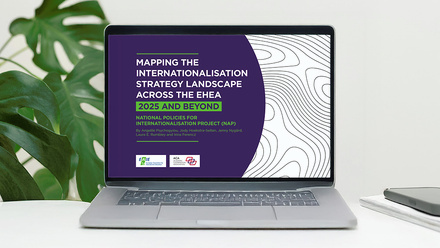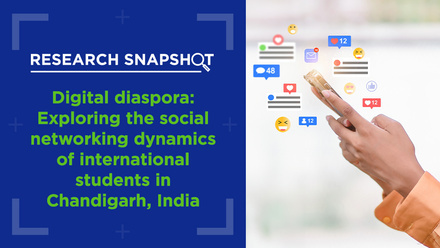How to support the international mobility of LGBTQIA+ students

Most, if not all, mobility programmes place emphasis on inclusion and diversity and strive to reach students from all backgrounds. Despite this focus, it seems that limited attention has been paid to LGBTQIA+ students across both research and practical work on equal opportunities for international student mobility. To take stock of what is known at this point about opportunities, challenges and experiences of LGBTQIA+ international students, we gathered research findings on the topic and used them to develop practical recommendations for higher education institutions which have recently been published in the form of a policy brief.
We hope that these evidence-informed recommendations will help institutions support the LGBTQIA+ student community to enjoy the life-changing opportunity that studying abroad has the potential to be. We consider the topic highly relevant because LGBTQIA+ international students are at risk of facing intersectional barriers and discrimination that can hinder their participation in mobility programmes and can have drastic consequences for their mental health and well-being. Positive international experiences, however, can boost self-discovery and create a space for students to explore and express their identity freely.
This blog post is based upon work initiated within COST Action European Network on International Student Mobility: Connecting Research and Practice (CA20115), supported by COST (European Cooperation in Science and Technology). The action brings together researchers and practitioners from countries across Europe and aims to facilitate dialogue between and within the two groups, creating opportunities to cooperate and learn from each other. This supports both academic and practical work on this topic and gives valuable inspiration and information to all involved.
What do we know about LGBTQIA+ international students?
In our review of the existing literature on gender identity and sexual orientation of international students, we discovered that there is limited research surrounding LGBTQIA+ students and the obstacles that they face in terms of accessing international mobility opportunities. There are findings indicating that higher education institutions have not been successful enough in reaching out to LGBTQIA+ students and encouraging them to study abroad. One reason is the language use, which tends to be outdated and non-inclusive, making certain students feel excluded and discouraged. Another issue is the way that sending institutions try to protect their students in their outreach content, which, despite good intentions, can end up portraying sexual orientation and gender identity diversity as a problem, rather than highlighting the host institutions’ lack of preparedness to address these issues.
There is also a gap in the research when it comes to the experiences of LGBTQIA+ students while abroad and how they may be affected by their gender identity and sexual orientation. It does, however, seem that on top of the racist and xenophobic encounters that international students can experience, LGBTQIA+ students meet layered forms of inequalities, namely heterosexism, homophobia, transphobia and other forms of discrimination rooted in their sexuality or gender identity. Not surprisingly, this can vary significantly depending on both the country the student comes from and where the student goes to.
a safe and supportive university environment creates a space for LGBQIA+ students to explore and embrace their sexuality and gender identity, which supports their personal well-being and self-discovery.
Unequal treatment and marginalisation can be extremely damaging to the individual. When LGBTQIA+ students face stigma and prejudice on campus, they become more vulnerable to mental health issues. Furthermore, such experiences can hinder them in expressing their sexuality and gender identity freely, which again adds to psychological distress and may prevent people from seeking information on reproductive health. On the other hand, a safe and supportive university environment creates a space for LGBQIA+ students to explore and embrace their sexuality and gender identity, which supports their personal well-being and self-discovery.
Four things your institution can do
On a more positive note, there are steps that higher education institutions can take to foster diversity and create life-changing opportunities for LGBTQIA+ students, both at the sending and the receiving end of the mobility experience.
- Show a campus-wide support to LGBTQIA+ students: adopting visible symbols (rainbow flags, gender neutral language).
- Provide safety-related guidance for outgoing LGBTQIA+ students: flagging potential risks without discouraging LGBTQIA+ students from being mobile.
- Provide helpful connections and resources for LGBTQIA+ students: ensuring access to information about available support (e.g. local LGBTQIA+ associations)
- Foster mutual respect among students from diverse backgrounds: prioritising building bridges between students from diverse backgrounds to foster respect and celebration of LGBTQIA+ diversity.
Fostering the mobility of LGBTQIA+ students not only opens up a world of opportunities for them but also plays a pivotal role in promoting equality on a global scale. The impact reaches far beyond individual experiences and contributes to a larger imperative of inclusivity and diversity. To delve deeper into the strategies and recommendations outlined in our policy brief on the inclusion of LGBTQIA+ students in mobility programs, we invite you to read the full document and join us in championing a more inclusive future for all.






